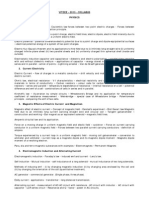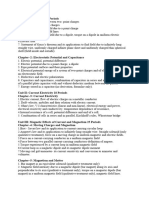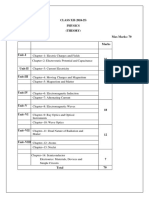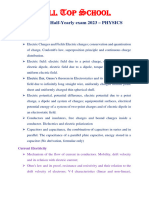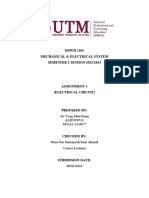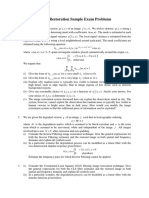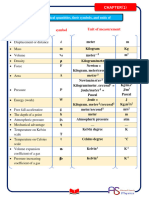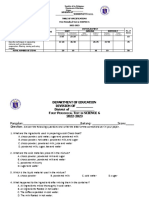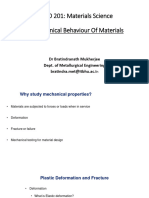0% found this document useful (0 votes)
50 views4 pagesMinimum Learning Material of Physics PDF
The document outlines key concepts in physics, covering topics such as electric charge, electric fields, electric potential, current electricity, magnetism, electromagnetic induction, alternating current, electromagnetic waves, ray optics, wave optics, dual nature of radiation, atomic structure, nuclear physics, and semiconductor electronics. Each chapter includes definitions, laws, derivations, and diagrams related to the respective topics. The document serves as a comprehensive guide for understanding fundamental principles and applications in physics.
Uploaded by
Debolina PaulCopyright
© © All Rights Reserved
We take content rights seriously. If you suspect this is your content, claim it here.
Available Formats
Download as PDF, TXT or read online on Scribd
0% found this document useful (0 votes)
50 views4 pagesMinimum Learning Material of Physics PDF
The document outlines key concepts in physics, covering topics such as electric charge, electric fields, electric potential, current electricity, magnetism, electromagnetic induction, alternating current, electromagnetic waves, ray optics, wave optics, dual nature of radiation, atomic structure, nuclear physics, and semiconductor electronics. Each chapter includes definitions, laws, derivations, and diagrams related to the respective topics. The document serves as a comprehensive guide for understanding fundamental principles and applications in physics.
Uploaded by
Debolina PaulCopyright
© © All Rights Reserved
We take content rights seriously. If you suspect this is your content, claim it here.
Available Formats
Download as PDF, TXT or read online on Scribd
/ 4























